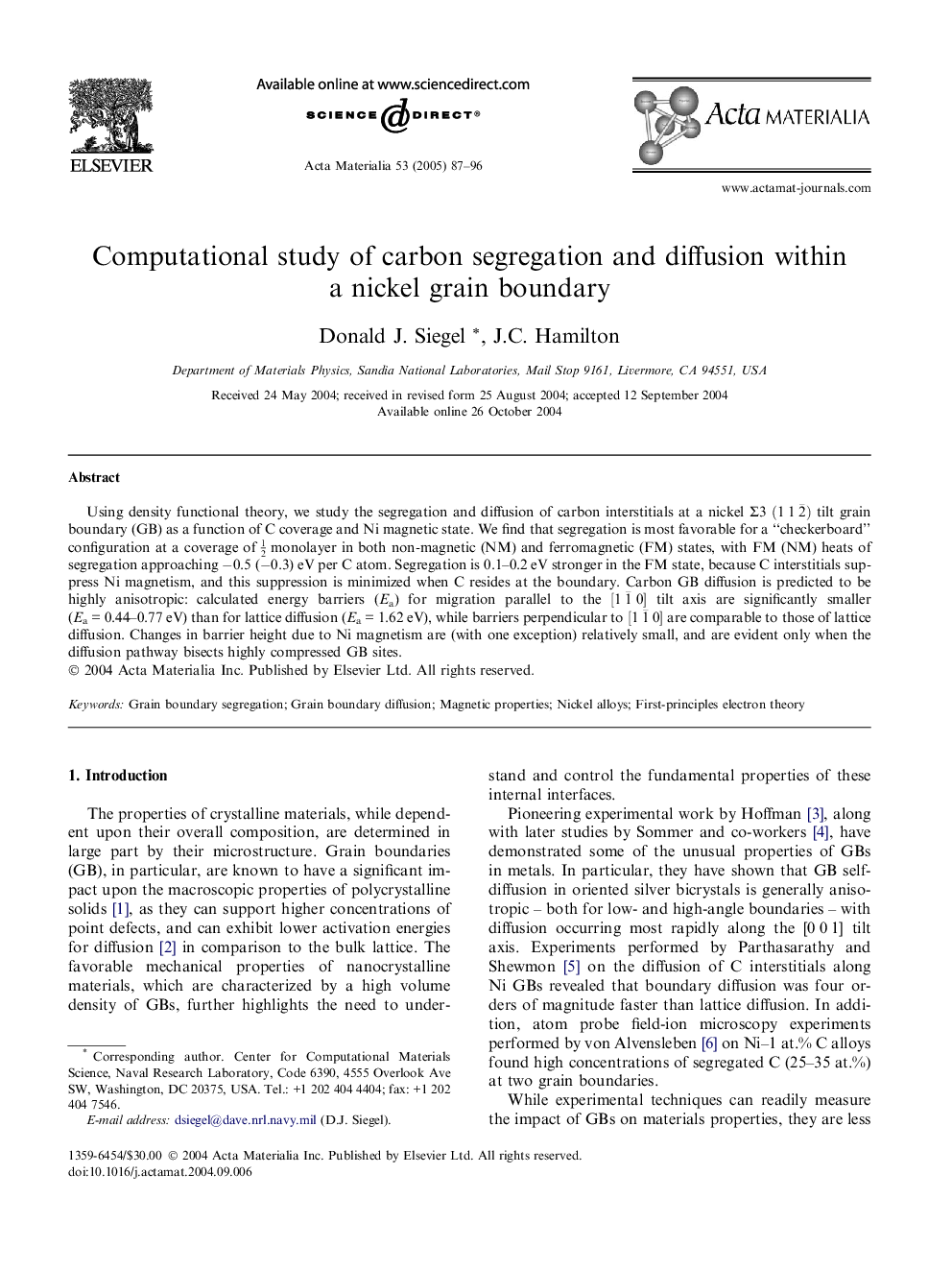| Article ID | Journal | Published Year | Pages | File Type |
|---|---|---|---|---|
| 10620931 | Acta Materialia | 2005 | 10 Pages |
Abstract
Using density functional theory, we study the segregation and diffusion of carbon interstitials at a nickel Σ3 (112¯) tilt grain boundary (GB) as a function of C coverage and Ni magnetic state. We find that segregation is most favorable for a “checkerboard” configuration at a coverage of 12 monolayer in both non-magnetic (NM) and ferromagnetic (FM) states, with FM (NM) heats of segregation approaching â0.5 (â0.3) eV per C atom. Segregation is 0.1-0.2 eV stronger in the FM state, because C interstitials suppress Ni magnetism, and this suppression is minimized when C resides at the boundary. Carbon GB diffusion is predicted to be highly anisotropic: calculated energy barriers (Ea) for migration parallel to the [11¯0] tilt axis are significantly smaller (Ea = 0.44-0.77 eV) than for lattice diffusion (Ea = 1.62 eV), while barriers perpendicular to [11¯0] are comparable to those of lattice diffusion. Changes in barrier height due to Ni magnetism are (with one exception) relatively small, and are evident only when the diffusion pathway bisects highly compressed GB sites.
Keywords
Related Topics
Physical Sciences and Engineering
Materials Science
Ceramics and Composites
Authors
Donald J. Siegel, J.C. Hamilton,
